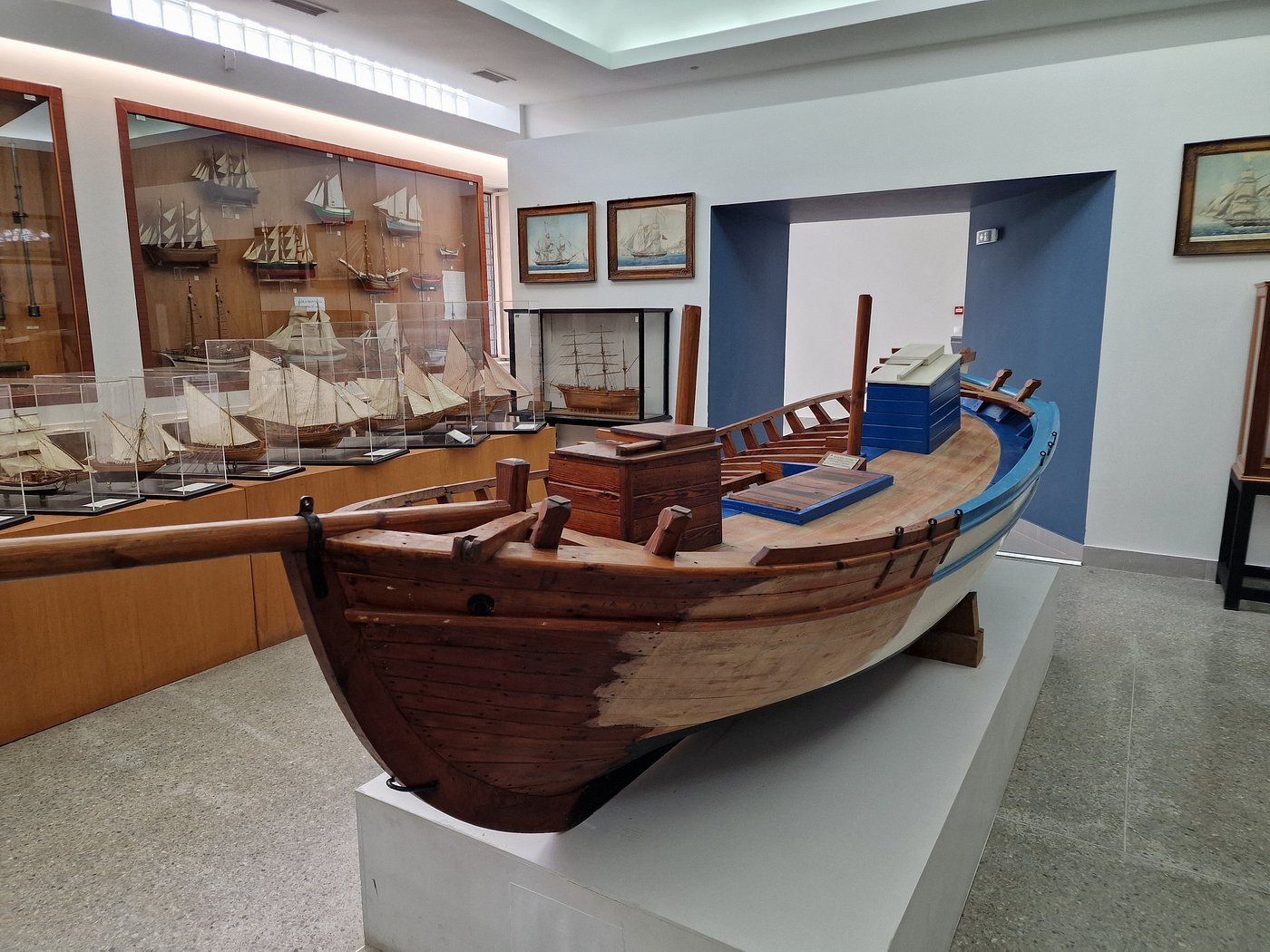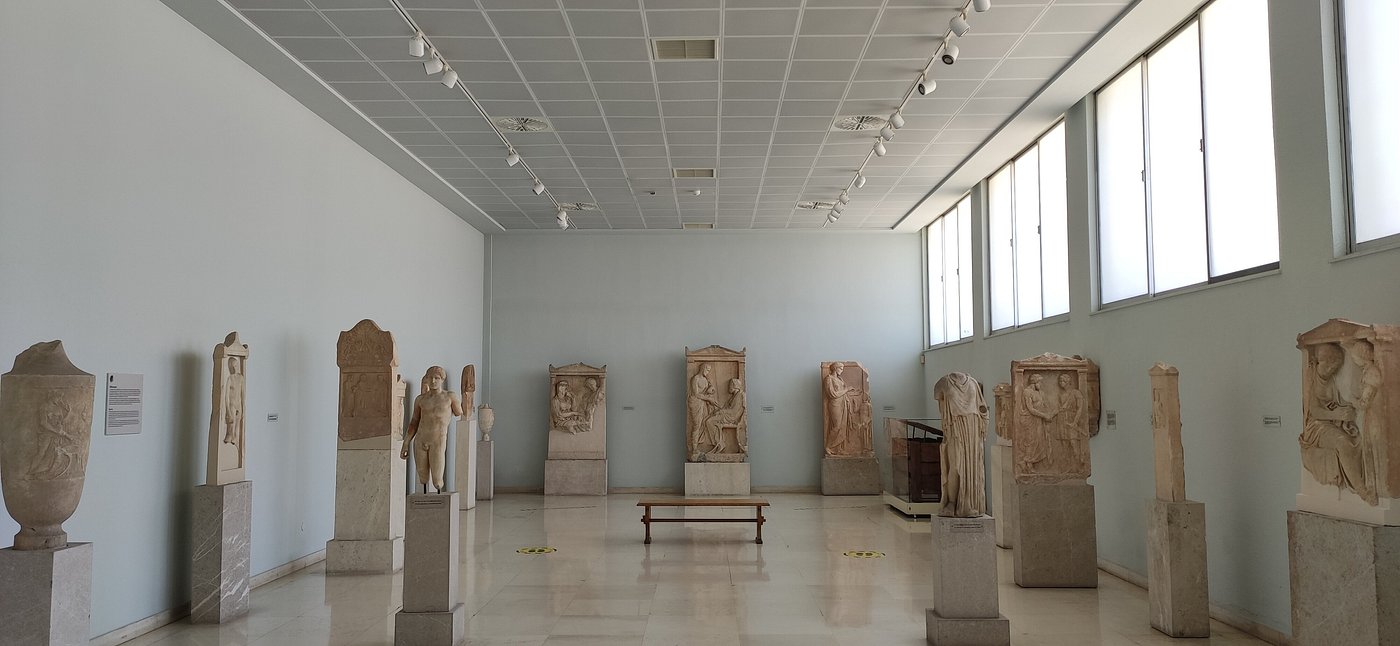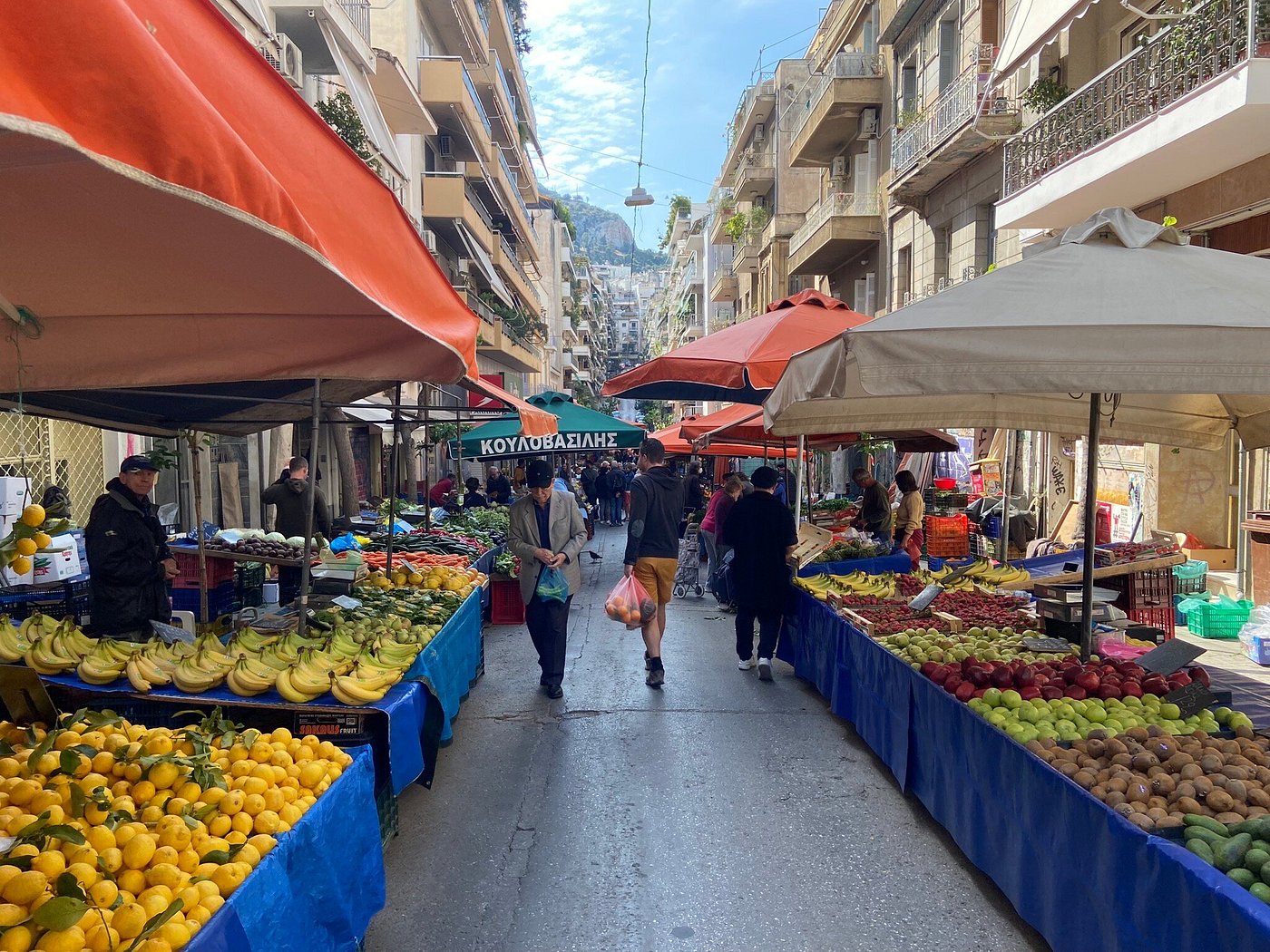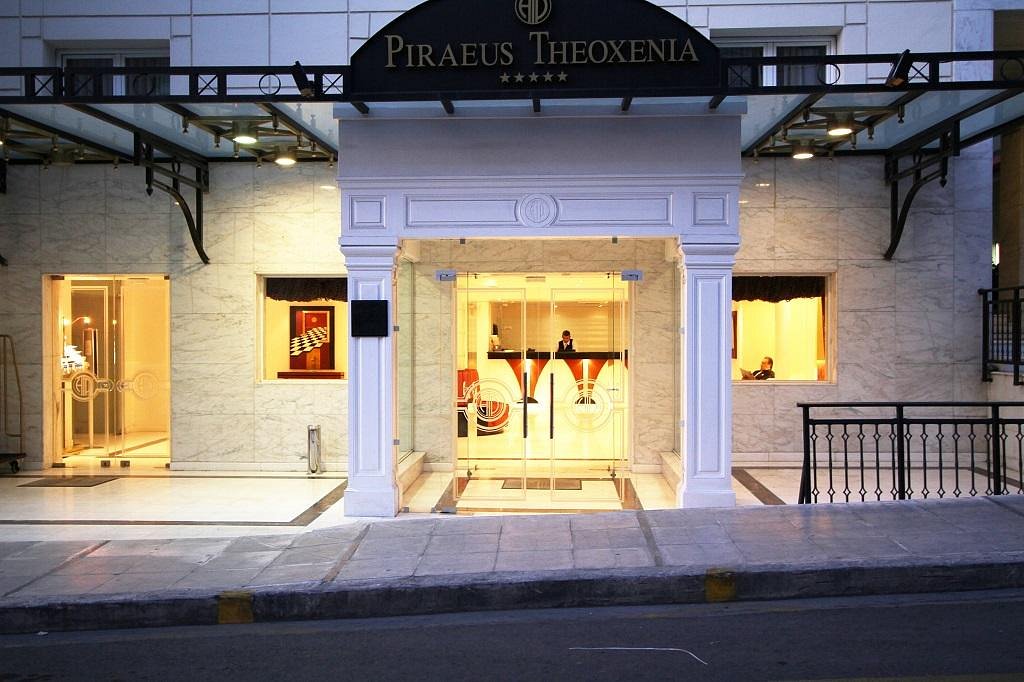Most travelers just breeze through Piraeus, using it as nothing more than Athens’ ferry hub. I used to do the same thing on past trips to Greece, thinking of the port as a pit stop before island adventures. But last Friday, I finally decided to change my approach and spend a day seeing what locals have always known—Piraeus deserves attention for its maritime museums, seaside cafes, and vibrant neighborhoods that really reveal another side of Greek culture.

Image Source: Tripadvisor
Walking through Piraeus, I felt like I was finally discovering Athens’ hidden coastal soul. Past the crowded ferry terminals, I found cozy streets that led to gorgeous sea views and fish tavernas serving up the morning’s catch.
The contrast between ancient and modern life hit me everywhere. This is where the mighty Athenian fleet once launched, and now cruise ships tower over the harbor.
What surprised me most? Piraeus manages to be a busy working port and still have real character. I watched fishermen fixing their nets while tourists and locals mixed in waterfront cafes.
Exploring Piraeus made me realize it’s not just a place to wait for a ferry—it’s a vital piece of Athens many visitors skip.
First Impressions of Piraeus Beyond the Ferries
Leaving the busy ferry terminals behind, I found a Piraeus that most travelers miss—a place with lively neighborhoods, rich maritime history, and authentic Greek culture untouched by the tourist crowds of central Athens.
Unveiling the Soul of the Port
As I wandered past the ferry docks, Piraeus quickly showed me it was more than a transit point. The Archaeological Museum of Piraeus surprised me with its impressive ancient artifacts.
Inside, bronze statues and maritime relics tell stories of this historic harbor where “the Athenian fleet was built and berthed in the days of ancient Greece.”
Mikrolimano harbor quickly became my favorite spot. This small fishing port, lined with seafood tavernas, offered amazing views of colorful boats bobbing in turquoise waters.

Local fishermen fixed their nets while restaurant owners laid out fresh catches.
Unlike the packed Acropolis, I found myself surrounded by Greeks, not tourists. The Piraeus Municipal Theater, with its neoclassical style, stood as a proud reminder of the port’s cultural significance beyond shipping.
Local Color: Street Scenes and Neighborhoods
Walking through Pasalimani (Zea Marina), I noticed the contrast between luxury yachts and old fishing boats sharing the same waters. Elegant cafés line the promenade where locals gather for coffee and lively chats.
Kastella caught my eye with its hillside charm. Narrow, winding streets led to colorful houses and spectacular views of the Saronic Gulf.
I stopped at a tiny family taverna, and the owner insisted I try his homemade tzatziki—honestly, the best I’ve had in Greece.
Street markets pulsed with real life. At the bustling fish market, vendors shouted prices while shoppers bargained with expressive gestures.
Nearby, the fruit and vegetable market overflowed with olives, tomatoes, and fresh herbs.
The main shopping street, Sotiros Dios, gave me a look at everyday Greek life far from touristy souvenirs. Locals shopped for household goods while older men gathered at corner cafés for intense backgammon games.
Hidden History and Culture Around Piraeus
Underneath its bustling port exterior, Piraeus hides centuries of stories. The area’s deep maritime heritage, surprise artistic corners, and ancient philosophical ties create a rich tapestry that most ferry-bound tourists never glimpse.
Maritime Legacies and Greek History
Walking through Piraeus, I couldn’t ignore how much the sea has shaped Greek identity. The Maritime Museum displays Greece’s naval battles and exploration history with ship models and old navigation tools.

Image Source: Tripadvisor
I spent almost an hour examining ancient triremes that once launched from these very shores.
The port was the naval heart of ancient Athens, where the powerful fleet took shape. Most visitors rush through, not realizing they’re standing where Themistocles once rallied ships against the Persians.
Local fishermen I chatted with still keep traditions alive, passing them down for generations. Their weathered hands tell stories of a bond with the sea that hasn’t really changed.
Unexpected Artistic Discoveries
Behind the industrial look, Piraeus actually has a thriving artistic side. Street art brightens up corners, mixing ancient themes with modern flair.
One mural of Poseidon with contemporary touches really caught my eye.
The Municipal Gallery displays impressive work by Greek artists that most tourists never see. I had the galleries almost to myself and was genuinely surprised by the quality.
Local artisans still make traditional crafts in small workshops. I stumbled into a family pottery shop using techniques that go back centuries.
The owner showed me how their designs borrow ancient motifs from local artifacts.
Plato, Philosophy, and Ancient Connections
Not many realize that Piraeus pops up in Plato’s works. The start of “Republic,” one of the most influential texts in philosophy, is set right here.
I walked the same paths where Socrates and his students debated justice and the ideal state.
The Archaeological Museum of Piraeus displays marble statues and bronze artifacts that link directly to the philosophical traditions born here.

Image Source: Tripadvisor
Standing before these treasures, I felt oddly connected to the thinkers who shaped Western thought.
Just a short metro ride away, the Acropolis and its museum add context to Piraeus’ role in ancient Athens. The port’s strategic importance really stands out when you see it as part of the bigger historical picture.
If you have time, it’s worth understanding this connection instead of treating Piraeus as just a departure point.
Savoring the Flavors of Piraeus
Food in Piraeus gives you a delicious peek into local culture, blending maritime traditions with modern Greek cuisine. The port area serves up authentic flavors that most people rushing for ferries completely miss.
Traditional Restaurants and Modern Eateries
Wandering through Piraeus, I found tavernas tucked away from tourist paths where fishermen gather for lunch. At Margaro, a no-frills spot near the port, I ate the freshest grilled fish caught that morning—just olive oil and lemon. Sometimes, simple really is best.
For something more modern, I headed to Mikrolimano marina. Upscale restaurants like Varoulko Seaside serve creative takes on classic seafood.
The grilled octopus was so tender I barely needed a knife, and the sea urchin pasta tasted like the Aegean itself.
Don’t skip the kafeneion experience! These traditional Greek coffee shops serve thick, strong coffee alongside sweet loukoumades (honey doughnuts).
Locals linger here, debating politics and soccer.
Exploring the Laiki Agora and Local Food Markets
The Laiki Agora (farmers’ market) brings Piraeus to life every Friday near Pasalimani. Vendors called out to me as I browsed piles of olives, feta blocks, and dew-kissed vegetables.

Image Source: Tripadvisor
“Try before you buy!” an elderly woman urged as she handed me a spoonful of her homemade preserves. Her sour cherry spoon sweet was so good I bought three jars.
The Municipal Market offers a year-round food shopping experience. Inside this historic building, I found family-run butcher shops, fishmongers displaying the morning catch, and specialty stores packed with Greek herbs and spices.
The best part? Prices here are for locals, not tourists. I filled my bag with Aegina pistachios, mountain tea, and dried figs for half what I’d pay in central Athens.
Joining a Food Tour for Local Tastes
Booking a food tour through Piraeus led me to hidden gems I’d never have found alone. Our guide Maria, a Piraeus native, took our small group to seven different stops in four hours.
We started with traditional Greek breakfast—koulouri (sesame bread rings)—then visited a 100-year-old dairy shop for yogurt with honey. The owner showed us how they still make yogurt with old family methods.

Image Source: Wikimedia Commons
The highlight? A tiny ouzo bar where we paired the anise-flavored spirit with mezedes (small plates) like marinated anchovies and stuffed vine leaves.
“In Greece, we never drink without eating,” Maria told us as we toasted. We wrapped up with loukoumades drizzled with honey and cinnamon from a shop that’s been around since 1922.
Wandering the Picturesque Mikrolimano and Pasalimani Harbors
Stepping away from the main ferry terminals, I found two of Piraeus’ most charming coastal gems. These twin harbors show a whole different side of port life, blending traditional Greek maritime culture with modern seaside leisure.
Seaside Cafés, Bars, and Nightlife
Mikrolimano’s waterfront grabbed me right away with its horseshoe-shaped harbor and colorful fishing boats. I kicked off my morning at a traditional kafeneio, sipping Greek coffee and watching fishermen mend their nets.
By afternoon, the mood shifts as tavernas fill with people enjoying fresh seafood. I picked a tiny family-run place where the catch of the day came right from the Aegean.
As the sun set, Pasalimani’s more cosmopolitan energy started to buzz. The bars range from casual beach spots to sleek cocktail lounges.
I especially liked an outdoor bar with views across the bay toward the Greek islands.
The nightlife gets lively after dark, but it still feels authentically local—nothing like the touristy parts of Athens.
Harbor Walks: From Fishing Boats to Luxury Yachts
My favorite thing? Just strolling along the curved promenades of both harbors.
Mikrolimano (literally “small port”) lives up to its name with an intimate scale and a traditional vibe.
Wooden caïques painted in blue and white bob next to small fishing boats. Even though restaurants now line the shore, the harbor has kept its working character.
At Pasalimani (also called Zea Marina), the scene changes—modern luxury takes over.
Gleaming yachts from all over the Mediterranean dock here, making a sharp contrast to Mikrolimano’s humble boats.
The marina fits up to 670 vessels, making it one of the biggest in the eastern Mediterranean.
I spotted boats flying flags from Italy, France, and the Aegean islands, showing Piraeus’ role as a true gateway to the Greek archipelago.
Gateway to Adventure: Exploring Beyond Piraeus
Piraeus isn’t just Athens’ historic port—it’s the jumping-off point for countless Greek island adventures. From this busy harbor, you can reach some of Greece’s most stunning spots across the blue Aegean.
Island Hopping Starts Here
Standing on the Piraeus docks, I always feel the pull of endless possibilities stretching across the horizon. This is where Greek island dreams actually begin.
The port connects to over 200 inhabited islands, from famous hotspots to lesser-known gems.
I’ve seen plenty of first-time visitors get overwhelmed by Piraeus’ size—it’s split into three main harbors (Central, Zea, and Mikrolimano), with most ferries leaving from the Central port.
In summer, the place buzzes with energy. Thousands of travelers pass through every day, creating a lively mix of anticipation and excitement.
My favorite part is hearing all the different languages and watching families, backpackers, and honeymooners all start their island journeys.
Planning Ferry Routes to the Cycladic and Aegean Islands
The most popular routes from Piraeus head to the Cycladic islands, famous for their white-and-blue buildings. Mykonos and Santorini top most lists, and honestly, their beauty is hard to beat.
But in my opinion, some lesser-known islands offer equally amazing experiences.
Popular Island Routes from Piraeus:
- Mykonos: 3-5 hours (high-speed/conventional)
- Santorini: 5-8 hours
- Crete (Heraklion): 7-9 hours
- Rhodes: Usually an overnight journey
I’ve learned that island hopping works best when you plan a logical route. For example, pairing Mykonos with nearby Naxos and Paros makes more sense than zigzagging across different island groups.
Schedules change a lot by season. Summer brings frequent departures, but winter means fewer ferries, especially to smaller islands.
Tips for Buying Ferry Tickets and Navigating the Port
Honestly, I’ve learned the hard way: if you want a ferry ticket during peak season (June to September), you really need to book ahead. Sites like Ferryhopper have saved me from a lot of last-minute panic.
I always get to the port at least an hour before my ferry leaves. Piraeus gets wild, and just figuring out which gate you need can eat up way more time than you’d expect.
Essential Ferry Ticket Tips:
- Book early for summer travel—think two or three months ahead.
- Weigh conventional ferries against high-speed ones (cheaper vs. faster, basically).
- Always check the cancellation policy—some are stricter than others.
- Download your e-ticket, just in case your phone signal flakes out at the port.
If you’re trying to save money, stick with the conventional ferries. They usually cost much less than the speedy ones. My personal trick? I use overnight ferries for island hopping. That way, I don’t pay for a hotel and wake up ready to explore.
And hey, don’t forget to validate your ticket at the kiosks by the gate. It’s easy to miss if you’re not paying attention!
Insider Advice for a Memorable Day in Piraeus
After bouncing through Piraeus a few times, I’ve picked up some tips that go beyond just catching a boat. This city has a ton of character, and if you’re up for exploring, you’ll find plenty to love—whether you’re staying overnight or just passing through.
Best Accommodations Near the Port
Finding a good spot to stay in Piraeus can make everything so much easier. I like the Piraeus Dream Hotel for its clean rooms and harbor views. Plus, you can walk to the ferry terminals in about five minutes.
If you’re watching your budget, The Lekka Rooms keeps it simple but comfortable. The staff there always point me toward great local restaurants.
Looking for something fancier? The Piraeus Theoxenia Hotel has sleek rooms and a rooftop restaurant. I stayed there last summer and honestly, the sunset over the harbor with a glass of Greek wine was unforgettable.

Image Source: Tripadvisor
A lot of these places will hold your bags if you have a late ferry but need to check out early. That’s been a lifesaver for me more than once.
Practical Tips from a Seasoned Traveler
Try to get to the port at least 90 minutes before your ferry, especially in summer. The terminals can be a maze, and I’d rather have too much time than not enough.
Grab the OASA Telematics app for live updates on public transit. The X96 bus from the airport to Piraeus runs all day and night, and it’s only €6.
If you’re hungry, head to Zea Marina. I think Varoulko Seaside is worth it for a splurge, but Margaro serves up amazing grilled fish for way less.
And bring some cash! Most places take cards, but the little tavernas and shops sometimes don’t. If you need an ATM, you’ll find a few close to gate E9.
Day Trips to Athens, Meteora, and Beyond
You can reach Athens in about 20 minutes by metro. I’d recommend starting at the Acropolis early (definitely before 9 AM) to beat the crowds.
After that, wander through Plaka’s winding streets and grab some lunch. It’s got that old-world charm that’s hard to resist.
If you’re up for something different, Fantasy Travel runs guided day trips to Meteora. Those monasteries, perched high on the rocks in Thessaly, are just unreal.
The views will honestly leave you speechless. I’m not sure I’ve seen anything quite like it.
Prefer going solo? Hop on the suburban railway and check out the Temple of Poseidon at Cape Sounion. Trust me, the sunset there could give any famous view a run for its money.
Gospel Travel puts together personalized tours to Delphi, which is another day trip I’d call magical. Their guides really know their stuff and make the history come alive.
If you’re coming from London, you’ll find direct flights to Athens all year. That makes Piraeus a pretty tempting weekend escape, even when it’s chilly outside.


